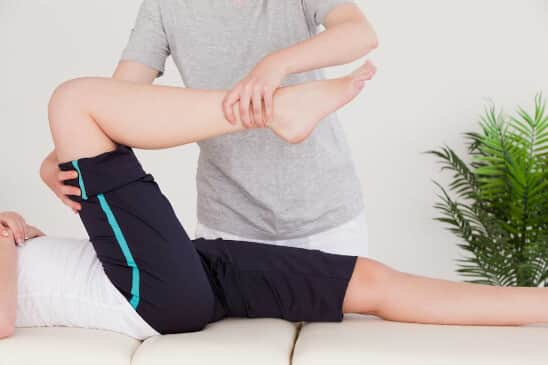What is the Role of Chiropractic in the Sports Environment?
Chiropractic care is a key treatment option in the management of musculoskeletal injuries. Performance is always a priority when treating athletes. It is suggested that a chiropractor should be consulted if an apparently healthy athlete’s physical performance is impaired. Performance issues can be identified and corrected by diagnosing and treating injuries early as well as working with coaches and other sports healthcare professionals. Chiropractors can carry out pre-performance tests to find and correct poor movement and muscle control of the joints. This improves overall function and performance. By correcting these issues early, we anticipate a reduction in injuries.
What Does Chiropractic Treatment of the Athlete Include?
Chiropractic treatment of the athlete includes the following interventions;
- Spinal joint mobilisation and manipulation
- Extremity joint mobilisation and manipulation
- Exercise prescription
- Sport specific training advice
- Soft tissue therapies
- Active release techniques
- Taping
Where Does Chiropractic Fit in with the Existing Sports Healthcare Team?
Health care professionals involved in sports medicine have many different roles. These roles include the emergency care response on the pitch, the management of injuries which happen on the field (ensuring the athletes continue to perform), out of competition injury, rehabilitation and prevention. By focusing on performance we can ensure that care is athlete centred. Chiropractors working in the sport environment appreciate the demands of the sport and provide care to help athletes compete at minimal risk to their health as well as ensuring optimum performance.
At many of the Major Games, medical teams attend to help look after the athletes by relying on their collaborative expertise to ensure optimum athlete performance. These teams include Medical Doctors, Physiotherapists, Chiropractors, Athletic Therapists, Massage Therapists, Psychologists and Nutritionists, many members of these teams comment that they enjoy the opportunity to work closely with experts in their own and other professions.
When looking at the inclusion of chiropractors into healthcare teams, a physiotherapist, when asked their opinion of professional collaboration at major events, commented that you go to these events as part of a sports medicine team, not a physio team or athletic team or chiropractic team, this gives the opportunity to share ideas and benefit from collaborative experience. All members of the team are working in the same context which is to keep athletes healthy and keep them performing to the best of their ability, the opportunity is there to assess an athlete decide on a treatment plan and discuss with another healthcare professional what their opinion is and what they can add to the treatment. Ultimately the purpose of an interdisciplinary team is to achieve maximum results for the athlete while taking advantage of each team member’s strengths. [ii]
What Are Some of the Conditions Chiropractic Can Treat?
Hamstring injuries can be treated with manipulation, mobilisation and soft tissue therapies to the spine and extremities all of which are carried out by chiropractors. This leads to a significant reduction in muscle strains and weeks missed due to non-contact knee injuries.[iii]
Ankle Sprains are very common injuries which can significantly affect performance. When looking at the acute injury, manual joint mobilisation reduces pain and increases the range of movement. In chronic ankle sprain injuries, these treatment techniques improve the range of movement, decrease the pain level and improve the function of the ankle. [iv]
There is positive evidence that rotator cuff disorders, shoulder disorders, and soft tissue disorders of the shoulder can be successfully treated with manual and manipulative therapy and inclusion of an exercise programme. [v] Mobilisation in combination with exercise is a positive treatment option for tennis elbow (Lateral Epicondylitis). [vi]
Manipulative therapy has a place in the treatment of common lower limb disorders with there being fair evidence for the short-term treatment of hip osteoarthritis, knee osteoarthritis, patellofemoral pain syndrome and ankle inversion sprains as well as plantar fasciitis.[vii]
In recent times health care professionals have been increasingly focused on concussion, with the highest incidence in the under 18 age group. Typically, most concussions resolve in 7-10 days, however, in up to 33% of cases symptoms persist. When symptoms persist from a few weeks up to six months, it is considered to be post-concussion syndrome. Symptoms include headaches, neck pain, difficulty concentrating, dizziness and fatigue. Even low speed impacts can cause neck and head injuries. Spinal manual therapy, neuro-motor training in addition to rest and exercises are effective in ensuring quicker recovery and return to play when compared to just information and advice given to patients. The influence of the neck on concussion and post-concussion syndrome is supported by increasing evidence and is largely accepted. [viii]
[i] A Survey of Fellows in the College of Chiropractic Sports Sciences (Canada): Their intervention practices and intended therapeutic outcomes when treating athletes. The Journal of the Canadian Chiropractic Association. 2010 54 (4) 282-292. Miners & Degraauw
[ii] The Integration of Chiropractors into Healthcare Teams; a case study from sport medicine. Sociology of Health and Illness. 2007. Theberge
[iii] The effect of a sports chiropractic manual therapy intervention on the prevention of back pain, hamstring and lower limb injuries in semi-elite Australian Rules Footballers: a randomized controlled trial. BMC Musculoskeletal Disorders. 2010 11 (64) Lawrence & Hoskins
[iv] The efficacy of manual joint mobilisation/manipulation in treatment of lateral ankle sprains: a systematic review. British Journal of Sports Medicine. 2014. Loudon, Reiman, Sylvain.
[v] Manipulative therapy for Shoulder Pain and Disorders: Expansion of a Systematic Review. Journal of Manipulative and Physiological Therapeutics. 2011. Brantingham, Cassa, Bonnefin, Jensen, Globe, Hicks, Korporaal.
[vi] Effectiveness of manual therapies: the UK evidence report. Chiropractic and Osteopathy. 2010. Bronfort, Haas, Evans, Triano.
[vii] Manipulative Therapy for Lower Extremity Conditions: Update of a Literature Review. Journal of Manipulative and Physiological Therapies. 2012. Brantingham, Bonnefin, Perle, Cassa, Globe, Pribicevic, Hicks, Korporaal.
[viii] Cervical Spine Involvement in Mild Traumatic Brain Injury: A Review. Journal of Sports Medicine. 2016. Morin, Langevin, Fait.




